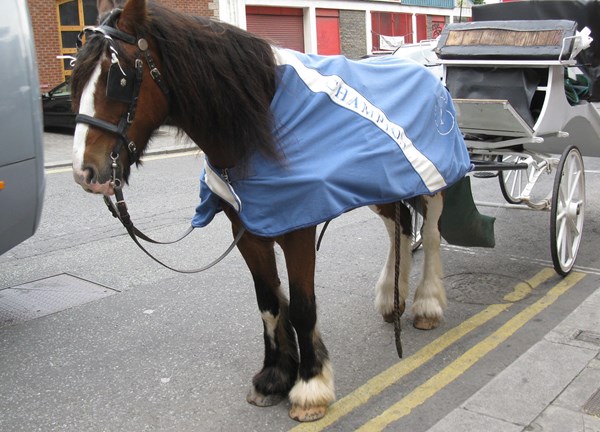The management and use of carriage horses, as a tourism instrument in cities, has been recently highlighted as a matter of public concern in terms of the welfare of these equines. The aim of this study was to assess changes in possible physiological welfare indicators in working horses, as a result of pulling tourism carriages under field conditions.
 Credit: Kimberly S. Brown Photo Results from the Chilean study showed that tourism carriage horses exerted a submaximal effort in terms of speed, force and physiological variables assessed.
Credit: Kimberly S. Brown Photo Results from the Chilean study showed that tourism carriage horses exerted a submaximal effort in terms of speed, force and physiological variables assessed.A descriptive field study of the work performed by tourism carriage horses and their physiological, hematological and blood biochemistry implications was performed by researchers in Santiago, Chile. Ten tourism carriage horses were studied under normal working conditions. Description of work, speed, distance and force were measured. To assess welfare, physiological variables including heart rate, respiratory rate, rectal temperature and hematological and blood biochemistry parameters were evaluated before, during and after work.
Results show that tourism carriage horses exerted a submaximal effort in terms of speed, force and physiological variables assessed. The heart and respiratory rate showed an increases after work, but recovered to basal values within the first 10 minutes. Blood variables did not show changes that could be related to poor welfare. Lactate and packed cell volume were the only blood variables with differences across work with lactate decreasing over time and packed cell volume increasing with work and returning to basal levels at 10 minutes after work. Physiological variables showed a possible adaptation to work by the carriage horses but were not sufficient to diagnose a welfare problem.
Most of the horses were able to recover basal values of the variables assessed within 10 minutes. The tourism carriage horses studied seem to have adapted physiologically to their work activity, and the existence of a welfare problem cannot be determined with the variables assessed. Only one welfare aspect, related to the physical status, of these horses was assessed, and future studies should also include indicators of good mental and behavioral state to provide a more holistic view of their welfare state.
For more information on this study, click here. Summarized by Krishona Martinson, PhD, University of Minnesota.


